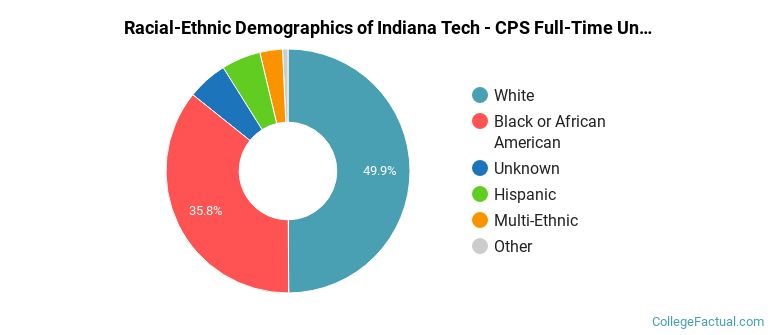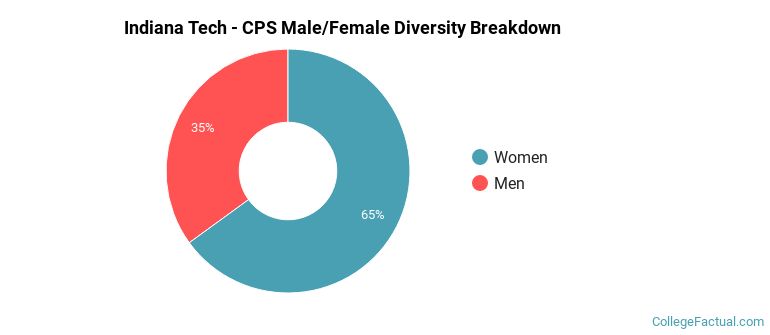 by our College Data Analytics Team
by our College Data Analytics TeamIndiana Tech - CPS total enrollment is approximately 3,846 students.
Male/Female Breakdown of Undergraduates
The full-time Indiana Tech - CPS undergraduate population is made up of 66% women, and 34% men.

For the gender breakdown for all students, go here.
Indiana Tech - CPS Racial/Ethnic Breakdown of Undergraduates

| Race/Ethnicity | Number |
|---|---|
| White | 910 |
| Black or African American | 560 |
| Unknown | 124 |
| Hispanic | 99 |
| Multi-Ethnic | 51 |
| Asian | 10 |
| Native Hawaiian or Pacific Islander | 4 |
| International | 2 |
See racial/ethnic breakdown for all students.

| Race/Ethnicity | Number |
|---|---|
| White | 1,985 |
| Black or African American | 1,163 |
| Unknown | 315 |
| Hispanic | 222 |
| Multi-Ethnic | 110 |
| Asian | 27 |
| Native Hawaiian or Pacific Islander | 7 |
| International | 3 |

There are approximately 2,462 female students and 1,384 male students at Indiana Tech - CPS.
Learn more about international students at Indiana Tech - CPS.
Footnotes
*The racial-ethnic minorities count is calculated by taking the total number of students and subtracting white students, international students, and students whose race/ethnicity was unknown. This number is then divided by the total number of students at the school to obtain the racial-ethnic minorities percentage.
References
Department of Homeland Security Citizenship and Immigration Services
Learn more about how College Factual creates their Diversity Rankings.